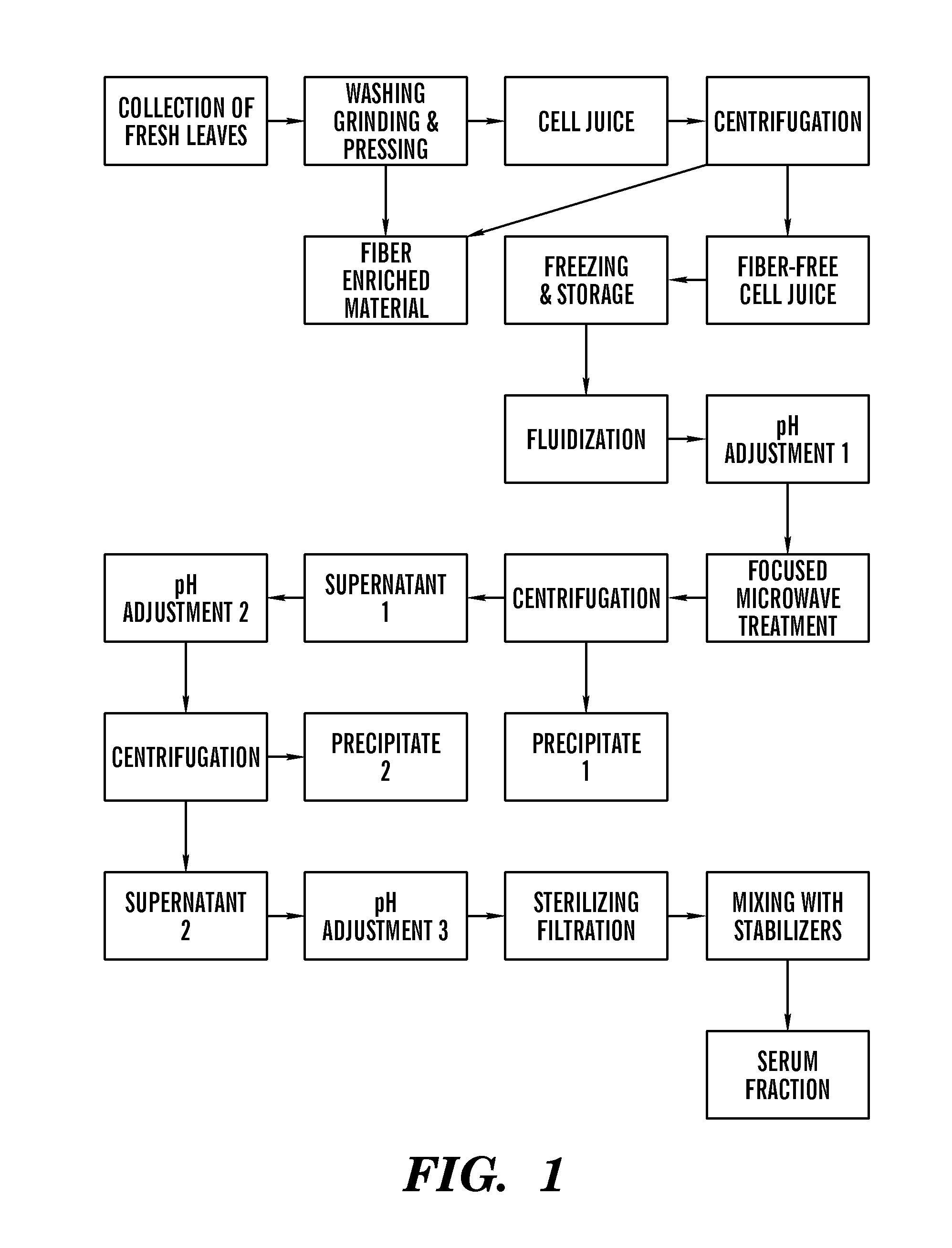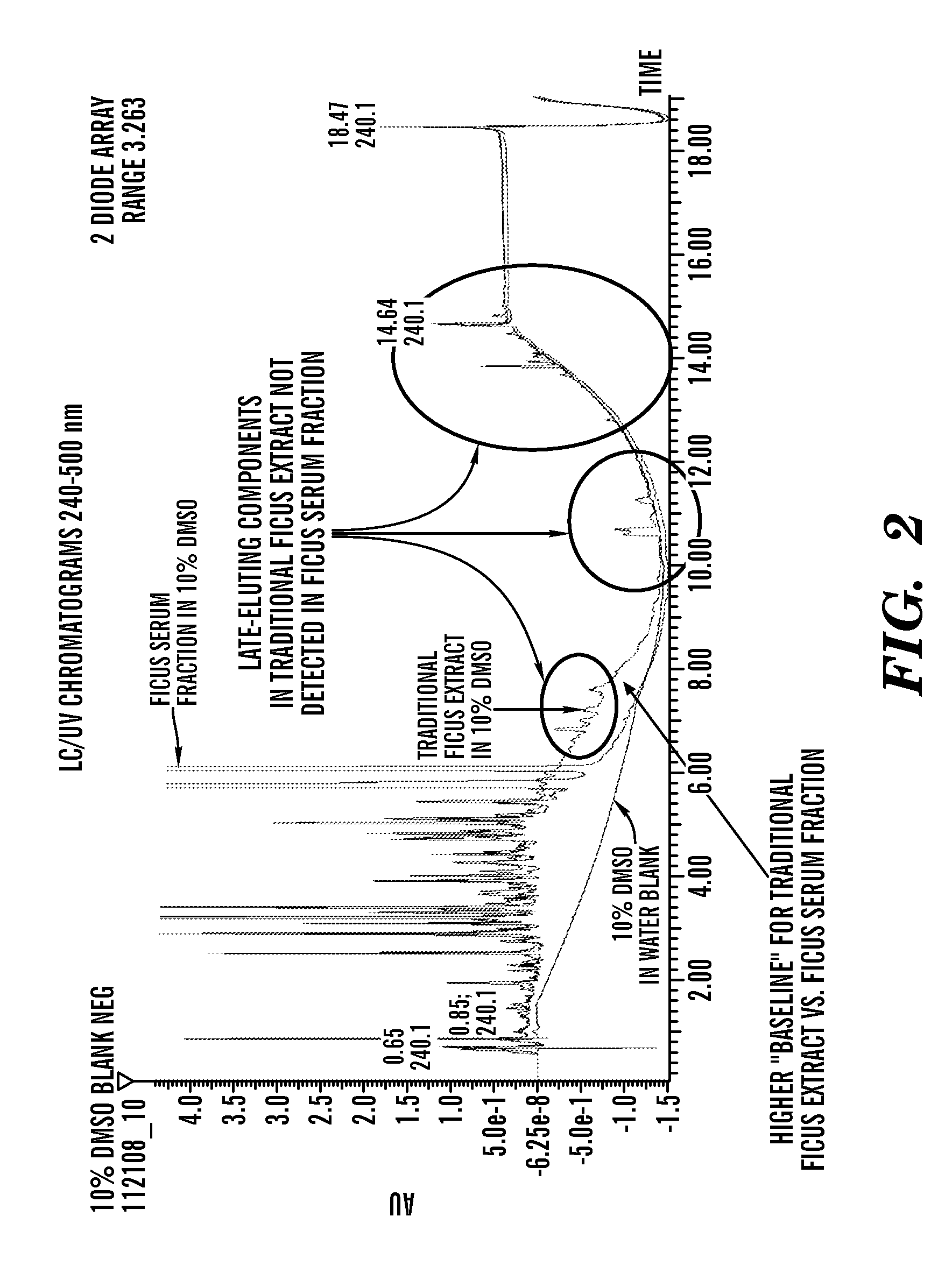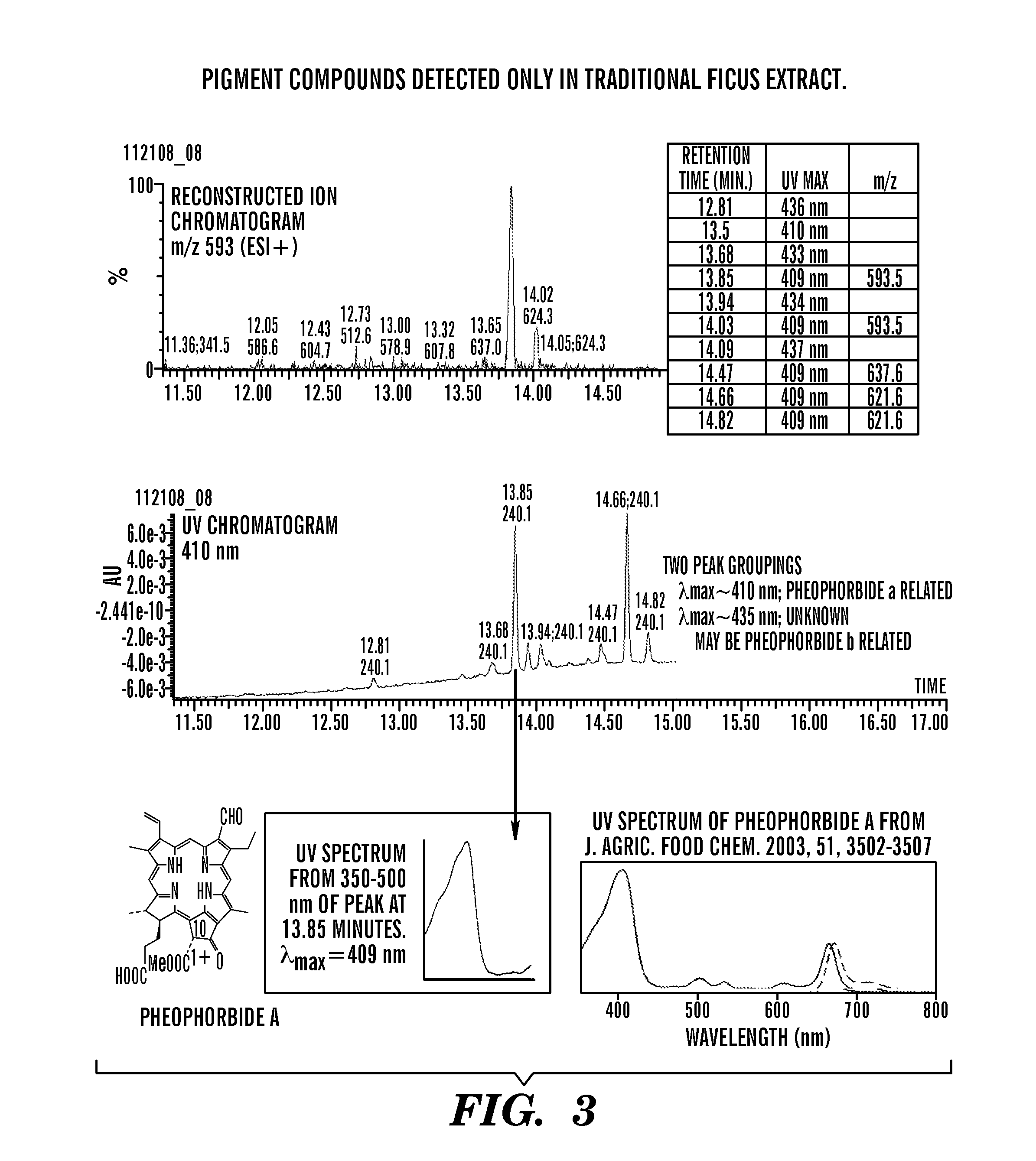Bioactive compositions comprising ficus serum fraction and methods to reduce the appearance of skin hyperpigmentation
a technology of ficus serum and composition, applied in the field of skin lightening, can solve the problems of skin hyperpigmentation, persistent hyperpigmentation, overproduction of melanin, etc., and achieve the effect of disrupting one or more steps in melanogenesis and reducing the appearance of skin hyperpigmentation
- Summary
- Abstract
- Description
- Claims
- Application Information
AI Technical Summary
Benefits of technology
Problems solved by technology
Method used
Image
Examples
example 1
Preparation of Bioactive Serum Fraction Derived from Fresh Leaves of Ficus benghalensis
[0147]FIG. 1 is a schematic drawing demonstrating one embodiment of the process for preparing the bioactive serum fraction from fresh ficus leaves.
[0148]Sufficient amount of fresh Ficus benghalensis leaves were collected to yield approximately 100 kg of dry matter. The level of dry matter in the fresh leaves was measured to be 32.01%, requiring harvesting of approximately 312.4 kg of fresh plant leaves to yield 100 kg of dry matter. Care was taken to preserve the inherent moisture content of fresh leaves and to avoid wilting due to moisture loss. The collection was conducted in such a manner to avoid or minimize any damage to the collected fresh leaves. All steps were completed in the shortest possible period of time to minimize exposure of the fresh leaves to sun, high temperature, and other negative environmental factors.
[0149]The collected leaves were then washed for ≦5 minutes and ≦1 kg / cm2 w...
example 2
Comparison of Characteristics and In Vitro Activities of Serum Fractions Obtained from Cell Juice of Ficus benghalensis
[0170]Fresh ficus leaves were collected at different locations and processed into cell juice as described in Example 1. This cell juice was frozen and stored at −30° C. in tightly closed 15 liter rectangular HDPE containers. One or more containers at a time were processed into Serum Fraction using the same procedure as described in Example 1.
[0171]Data presented in Table 6 and Table 7 shows variability of selected characteristics and in vitro activities of Serum Fractions obtained from multiple fractionations of the same source of frozen cell juice at different times as well as from fractionations from different frozen cell juice sources.
TABLE 6Selected Characteristics of Serum Fractions Obtainedfrom Cell Juice of Ficus benghalensisCharacteristicsResultsAppearanceFrom clear yellow to yellow-reddish liquidOdorCharacteristicSolubility in waterSoluble in any ratioColo...
example 3
Preparation of Water Extract of Dried Ficus benghalensis Leaves
[0172]50 g of air dried Ficus benghalensis leaves (collected from the same batch of leaves which was used in Example 1) were grinded with GM200 Grindomix knife mill (Retsch, Germany) to obtain particles having size <300 micrometer. Grinding included 20 seconds at 2,500 rpm, followed by 10 seconds at 2,500 rpm and then 10 seconds at 10,000 rpm. The grinded leaves were homogenized with deionized water using OMNI
[0173]Programmable Digital Homogenizer (OMNI International, Kennesaw, Ga.). The 35 g of grinded leaves were mixed with 490 g of water and placed in an ice bath on the homogenizer platform. Homogenization was conducted with a 20 mm homogenizer generator for 15 min at 15,000 rpm. The homogenate was then subjected to microwave treatment for 1 minute at 90° C. in an Initiator 2 Focused Microwave Processor (Biotage AB, Uppsala, Sweden). Microwave treated material was then centrifuged for 30 minutes at 3,200 g. The supern...
PUM
 Login to View More
Login to View More Abstract
Description
Claims
Application Information
 Login to View More
Login to View More - R&D
- Intellectual Property
- Life Sciences
- Materials
- Tech Scout
- Unparalleled Data Quality
- Higher Quality Content
- 60% Fewer Hallucinations
Browse by: Latest US Patents, China's latest patents, Technical Efficacy Thesaurus, Application Domain, Technology Topic, Popular Technical Reports.
© 2025 PatSnap. All rights reserved.Legal|Privacy policy|Modern Slavery Act Transparency Statement|Sitemap|About US| Contact US: help@patsnap.com



